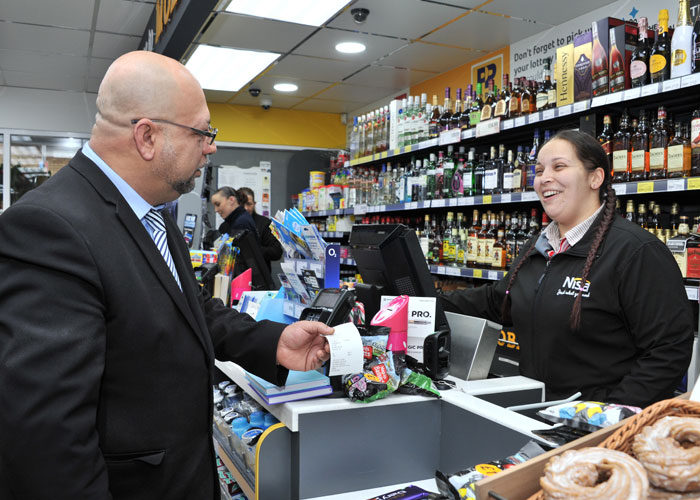How are sales? On field visits to seven convenience stores in the South East outside of London this past month, the answer I have mostly received is summed up by the word plodding.
What is going on, one top retailer asked me. Customers that he used to see every week, he now sees every other week. Where are they going, he asks. "Ask them," I suggested and he promised he would.
But this is evidence that the business model many of these shops has mastered needs to change.
Think on this! Dollar Shave Club is now spending on TV advertising where a customer is asked £19.65 for some razor blades. The customer blinks and says how much? The shop assistant passively says there is a free gift. The customer looks happy and goes to pick it up.
Then a glove shoots out from under the counter and boxes him in the groin. And as a clever millennial type walks into view saying how his e-commerce business model is better for you the glove shoots out again and knocks out the shopper.
All very funny, you may think. But this advertisement is on message and is telling people that the big brands that you support and their free gifts are ripping them off.
It portrays the retailer as participating in delivering bad value for consumers. This story is a big threat to your business future.
And local shops are not alone. Nestlé chief executive Mark Schneider admitted last week that the entire package goods industry had been slow to recognise the change in shopping habits.
Shoppers, he said, were “prone to buy economy or own-label brands” or when they got their wallets out it “had to be for a truly differentiated product with a very strong identity and high perceived value.”
Think on that. To get people spending you need a “truly differentiated” shop with a “very strong identity” and “high perceived value”. How do you get this for your shop?
Big brands may no longer be the answer, as Schneider observed. One of the shops I visited was a busy, very well merchandised supermarket but its owner says margins are falling all the time and he has no stand out products that are delivering profit and growth. Not a single category was working for him.
Consistent price pressure led by the discounters and Amazon and followed by the supermarkets is seeing a steady erosion of margins. Own brands are a way around this, another retailer I visited said. But he is pinning his future to selling more coffee and more food to go.
However, will his staff understand the changes under way? I talk to the owner about creating seating areas to advertise the fact to shoppers that his shop does food to eat now, to make his shop a destination and to differentiate his shop from his closest competitor.
His shops are both trading well and he is investing in keeping this going.
But if you look at the Nestlé playbook it is now committed to buying high growth business to add on to its core business. Is food-to-go the right strategy for your shop? And if it is, how will you deliver it to shoppers? Can you get the theatre right?
Which brings me to the final store I visited – Molly’s Nisa. This shop delivered a “differentiated” offer with a “high perceived value” and a “very strong identity”. The shop and its team were featured in an RN Lookbook on 26 January.
The report noted that their focus in to maintain this level of excitement year round.
This business is the opposite of the sterile environment presented in the Dollar Shave Club advertisement. Its sales are the opposite of plodding. The team has embraced food to go. It has embraced in-store theatre.
If you are stuck on where to take your business model, go to Luton and visit this store. And copy what works!





Comments
This article doesn't have any comments yet, be the first!